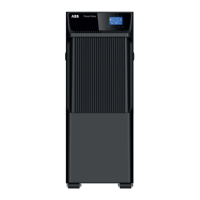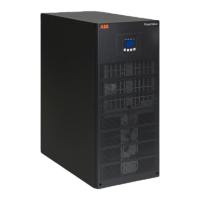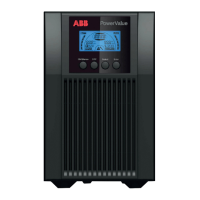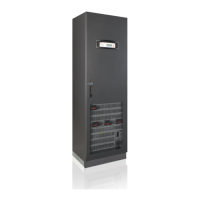04-3788_ABB_OPM_PVA11 6-10kVA-RT_EN_140423 Page 30/37 ABB
Modifications reserved
4 COMMUNICATION
A USB and an RS-232 port are available to enable the communication between the UPS and a remote
computer/station. Only one communication port can be active at a time and the priority is given to the USB
port.
Once the communication cable is installed, the power management software can exchange information with
the UPS. The software collects information from the UPS and indicates the status of the device, the power
quality of the mains and the battery autonomy of the units.
In case of a power failure and a predicted shutdown of the UPS due to low battery autonomies, the monitoring
system is capable of saving the data in the load and of initiating the shutdown of the equipment connected to
the UPS.
4.1 RS-232 port
An RS-232 port is available for UPS monitoring, control and firmware updates. To establish communication
between the UPS and a computer, connect one end of the serial communication cable that comes with the
UPS to the RS-232 port on the UPS and the other end of the serial cable to the RS-232 port on a computer.
The cable pins for the RS-232 communication port are described in Figure 39 and in Table 2.
Figure 39: RS-232 Communication Port
Table 2: Communication Port Pin Assignment
4.2 USB port
The UPS can communicate with an USB-compliant computer when using the appropriate power management
software. To establish communication between the UPS and a computer, connect the USB cable that comes
with the UPS to the USB port on the UPS. Connect the other end of the USB cable to the USB port on a
computer.
Pin Signal Name Function Direction from UPS
1 DCD Battery Low signal Out
2 RxD Transmit to external device Out
3 TxD Receive from external device In
4 DTR PnP from external device In
5 GND Signal common --
6 DSR To external device Out
7 RTS No connection In
8 CTS On Battery signal Out
9 RI V
DC
Power Out

